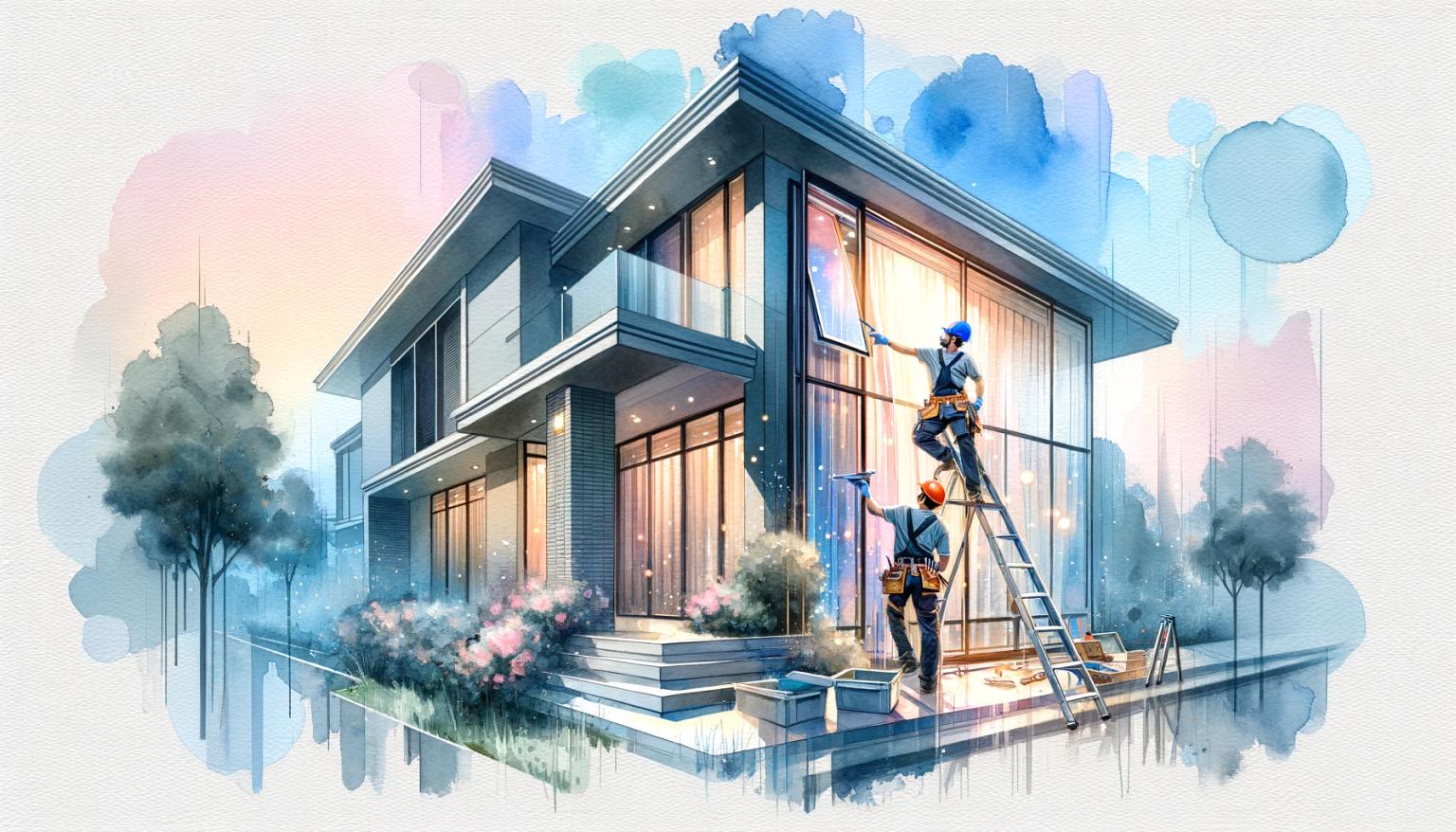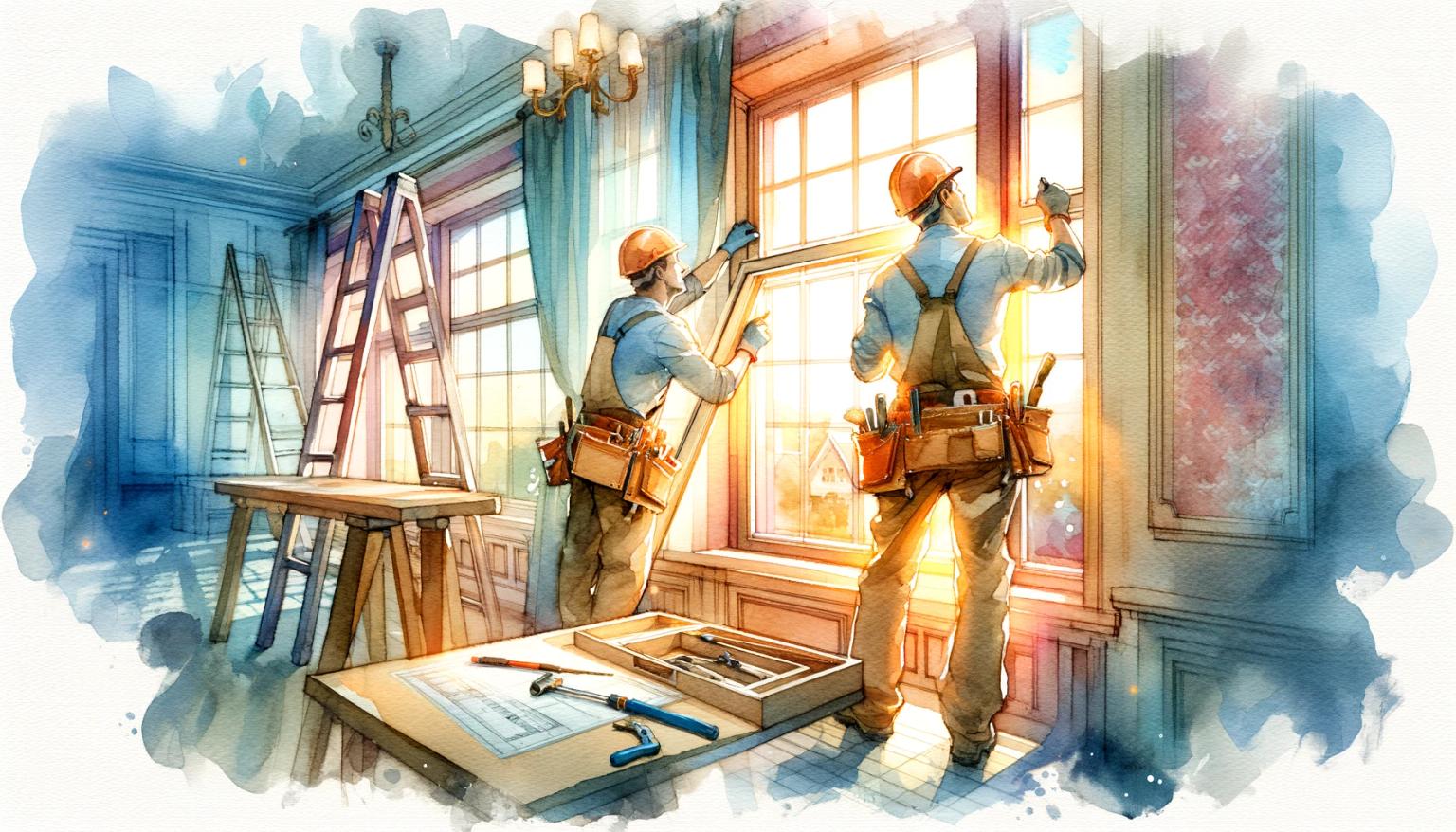- Egress
- Energy Efficiency
- Fire Safety
- Coastal Safety
- Natural Light & Ventilation
- Glass
- Glazing
- Doorways & Entrances
- Other Requirements
- Permits & Inspections
- Maintenance
From bustling urban centers to serene coastal areas and fire-prone regions, California's dynamic landscape necessitates strict building code requirements and regulations, especially concerning window and door replacements. Understanding and complying with these requirements is essential for any successful window and door replacement project, whether meeting the stringent energy efficiency standards of Title 24, ensuring safety through egress and fire regulations, or protecting homes in coastal areas.
This article delves into the critical aspects of California's building code requirements for window and door replacements, covering egress requirements, energy efficiency standards, fire and coastal safety regulations, and other important details.
Egress
California's building code mandates the installation of emergency escape windows, also known as egress windows, in habitable rooms used for sleeping. These requirements ensure that occupants can escape and rescue personnel can enter the building in case of emergencies.
All bedrooms in dwellings up to 3 stories high must have an egress window or door that leads directly outside. These windows must have a minimum net clear opening of at least 5.7 square feet, an unobstructed height of at least 24 inches, and a width of at least 20 inches.
The distance of a window from the floor (also known as the "window sill") should be at most 44 inches. If a window is located more than 44 inches above the ground, a permanently affixed ladder or steps must be provided to reach it. This requirement ensures that children can reach the window sill to escape during an emergency.
Egress windows must open from the inside using a mechanism like a crank or a lever that can be easily accessed in an emergency without special tools. Bars, grills, grates, or similar devices may be installed on emergency escape or rescue windows, doors, or window wells, as long as they are equipped with approved release mechanisms that can be opened from the inside without keys or extra effort.
Older homes built before egress window requirements must only comply if the existing rough opening is altered or enlarged. However, all new window or door installations must comply with egress requirements.
Finally, all egress openings must be properly maintained, ensuring that doors and windows can open and close easily and checking for any signs of damage or decay.
Energy Efficiency
California's Title 24 Building Energy Efficiency Standards are among the most rigorous in the country, applying to both new constructions and replacement windows and doors in existing buildings. These standards aim to reduce energy consumption and promote energy-efficient materials.
Windows and doors must meet U-factor and Solar Heat Gain Coefficient (SHGC) ratings that vary by climate zone within the state. For instance, replacement windows in cooler climates must have a lower U-factor for better insulation, while those in warmer areas should have a lower SHGC to reduce heat gain.
Generally, when replacing windows with less than 75 square feet of area, the new window installation must have a maximum U-Factor of 0.40 and a maximum Solar Heat Gain Coefficient (SHGC) of 0.30. If more than 75 square feet of window area is replaced, new installations must have a maximum U-Factor of 0.30 and a maximum SHGC of 0.23.
Fire Safety
Given California's susceptibility to wildfires, fire safety regulations for window and door replacements are strict. Windows and doors installed near property lines or areas at high risk for wildfires must meet specific fire resistance and ember intrusion standards. Materials must be non-combustible or fire-resistant, and windows may require tempered glass to prevent shattering in high heat. Additionally, vented openings must be protected with ember-resistant mesh to reduce the risk of ember intrusion.
Coastal Safety
For properties located in coastal zones, window and door replacements must adhere to regulations designed to protect against strong winds, salt air, and potential flooding. Windows and doors must be designed to withstand the area's specific wind load requirements, with impact-resistant glazing or shutters for areas prone to high winds. Materials must also resist corrosion from salt air, ensuring longevity and durability in harsh coastal environments.
Natural Light & Ventilation
California's building code emphasizes the importance of natural light and ventilation in habitable spaces. Every habitable room (except for bathrooms, laundry rooms, and hallways) must have natural light through windows, skylights, doors, or other approved openings.
Natural light openings must be at least 8% of the space's floor area, and the ventilation aspect must be at least 4% of the floor area.
Alternatively, whole-house mechanical ventilation and artificial lighting can fulfill these requirements.
Glass
California law requires that every window bear the manufacturer's mark and the thickness of the glass. The mark may be omitted if approved by the building official, and an affidavit from the glazing contractor indicates that the glass conforms to the construction documents and the requirements of the California Building Code.
Glazing
Safety glazing or tempered glass installed in windows and doors must meet the requirements for hazardous locations. The aggregate glazing area for a habitable room must be at least 8 percent of the room's floor area.
Per California Building Code Chapter 7A, at least one pane of all new windows must be tempered glass. Glazed or tempered glass is also required within 18 inches of a walking surface over 9 sq. ft. in size; the upper edge must be over 36 inches above the floor or, if adjacent to a tub/shower, within 60 inches of the floor.
Laminated, tempered, or other approved safety glazing is required for an individual fixed or operable panel adjacent to a door where (1) the glazing is within 24 inches of either side of the door in the plane of the door in a closed position; or (2) the glazing is on a wall perpendicular to the plane of the door in a closed position and within 24 inches of the hinge side of an in-swinging door.
Glazing is also required in walls, enclosures, or fences containing or facing hot tubs, spas, whirlpools, saunas, steam rooms, bathtubs, showers, and indoor/outdoor swimming pools where the bottom exposed edge of the glazing is less than 60 inches measured vertically above any standing or walking surface.
Bathrooms, toilet compartments, and similar rooms shall be provided with aggregate glazing in windows of at least 3 square feet, one-half of which must be openable.
Doorways & Entrances
All exterior doors require an exterior light switched from inside. Under no circumstances can a private garage open into a bedroom.
Egress doors must be installed at most 48 inches from the floor. Double-cylinder keyed deadbolts or locks requiring a removable tool or key are prohibited.
Additional requirements apply when changing a window to a sliding door. A landing with a minimum 3 ft depth and a width equal to or greater than that of the door is required. The door may swing over a landing that is level with the interior. Exterior lighting is required at each entrance/exit, which includes a switch and weather-proof light with photocell and motion sensor.
When a door is provided for egress instead of a window from a sleeping room, it must be a minimum of 3 ft. by 6 ft., 8 inch, exterior-grade door, openable without special knowledge or effort. When such doors are provided with manually operated deadbolts, they must have a thumb latch or similar operable device on the inside surface of the door.
Other Requirements
Historic Preservation
In areas with historical significance, window and door replacements may need to comply with guidelines that preserve the building's architectural integrity.
Sound Transmission
Sound transmission class (STC) ratings are required for window and door replacements. STCs vary by climate zone and are typically defined as the minimum U-factor required to transmit sound. STCs may be regulated in urban areas or near airports to ensure replacement windows and doors provide adequate sound insulation.
Permits & Inspections
Most California window and door replacement projects require a permit and subsequent inspection to ensure compliance with all applicable codes and regulations.
Most jurisdictions require NFRC labels to remain on windows for the building inspector to verify. Bay windows and similar assemblies require the manufacturer's listed installation instructions (UL, ICC, or equivalent). Electrical permits may be required if electrical wiring is moved or lights are added.
Maintenance
Drafts & Air Leaks
When windows lose their seal or weatherstripping wears out, cold or hot air can infiltrate the building, leading to drafts, air leaks, and increased energy bills.
Condensation
Condensation occurs when the seal between the glass layers fails, allowing moisture to accumulate. Condensation suggests reduced thermal efficiency and potential water damage to surrounding structures.
Difficulty Opening Or Closing
Difficulty operating windows compromise convenience and poses a safety hazard in emergencies. Windows that are difficult to open or close may have issues with their mechanisms, frames, or sashes due to warping, swelling, or damage caused by prolonged exposure to moisture or temperature fluctuations.
Visible Damage
Visible signs of wear and damage, such as rot, decay, or cracked glass, indicate that windows have reached the end of their lifespan. Damage to window frames, sills, or panes detracts from aesthetic appeal and compromises structural integrity and insulation.
Increased Energy Bills
A significant rise in energy bills indicates that poorly insulated windows allow heat to escape during the winter and enter during the summer, forcing HVAC systems to work harder to maintain comfortable indoor temperatures.


